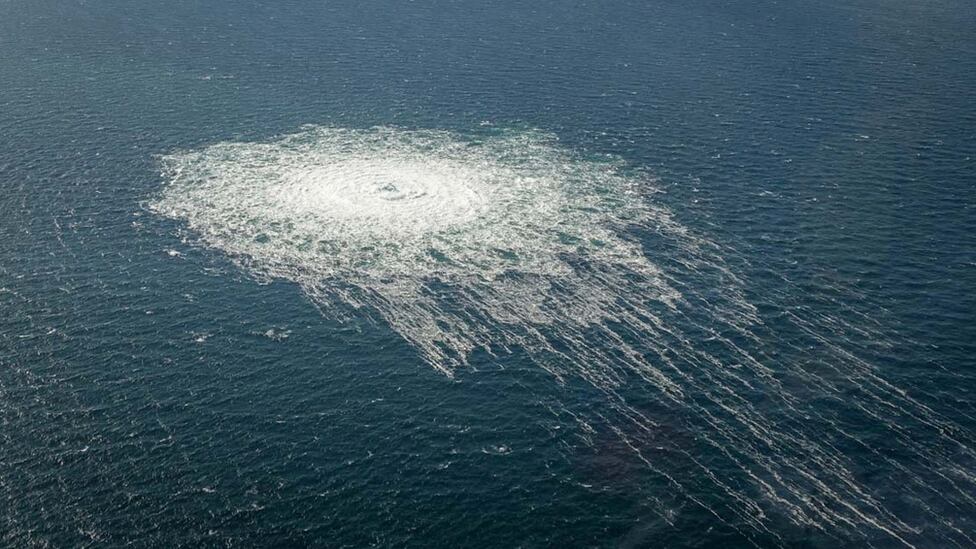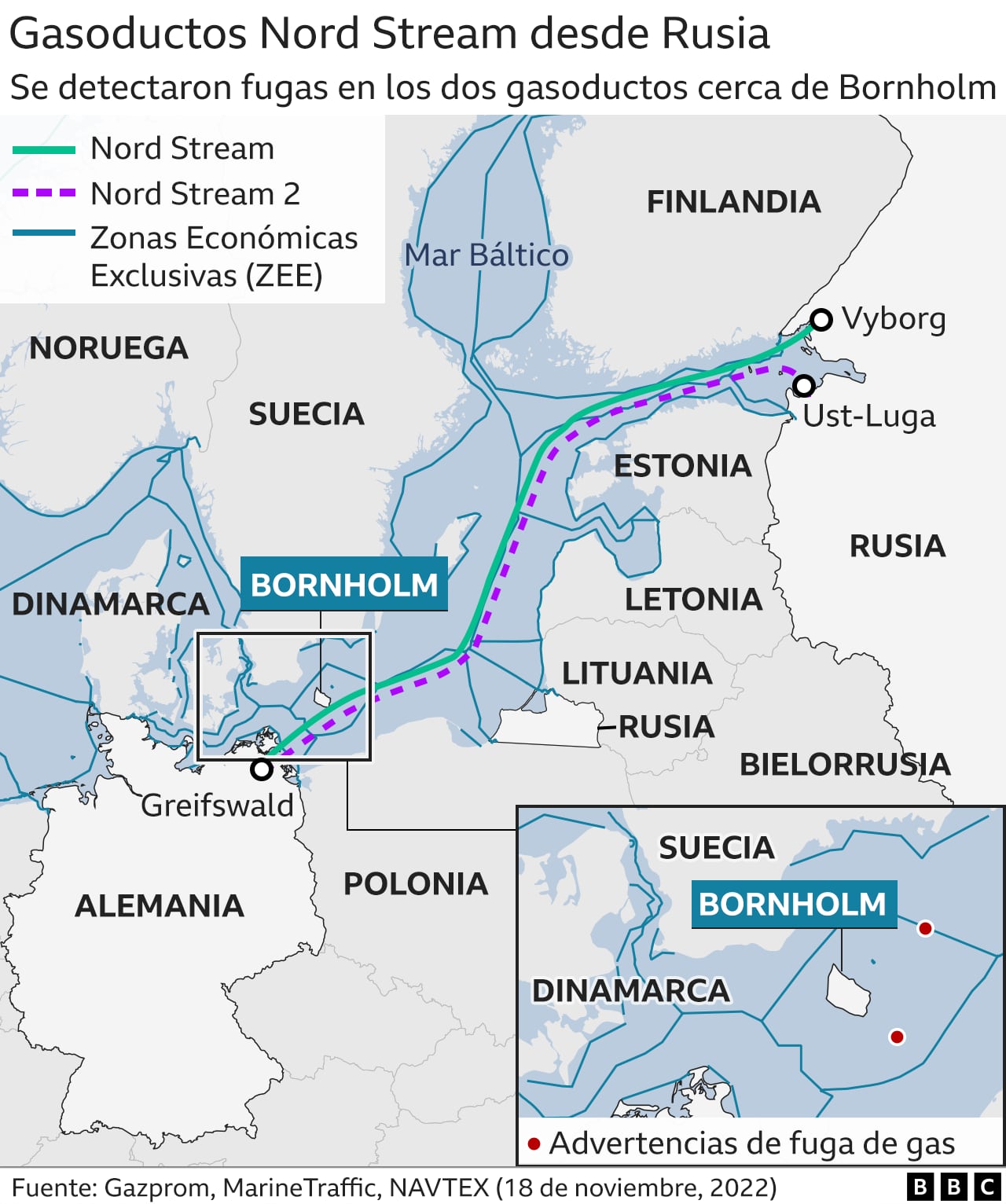:quality(75)/cloudfront-us-east-1.images.arcpublishing.com/elcomercio/ZXR54SOAPRFSFACIHUOVVUEZWE.jfif)
Last September, there were several explosions in the gas pipelines that transported gas from Russia to Europe through the Baltic Sea.
Since then the cause of the explosions has not been clarified, that put the two Nord Stream gas pipelines out of service.
LOOK: A powerful El Niño is forming: The “inexplicable” warming of the oceans that alarms scientists
But now a new documentary indicates that Russian ships, capable of conducting underwater operations, were detected at the site of the explosions.
According to the documentary, the vessels were located using intercepted communications from the Russian navy.
When the explosions happened, some in the West targeted Russia. Moscow, for its part, blamed Western countries.
More recently, intelligence reports emerged blaming pro-Ukrainian operatives, although they did not point to the Ukrainian government itself.
Formal investigations are still underway in the countries near the site of the explosion.
So far, these nations have only said that they believe the explosions were the result of sabotage and not some kind of accident.
But the latest show in a TV documentary series “Putin’s Shadow War” and its accompanying English-language podcast “Cold Front” offer a possible clue that points towards Russia’s involvement.
The series on broadcasters DR from Denmark, NRK from Norway, SVT from Sweden and Yle from Finland revealed last month that Russian ships appeared to be mapping wind farms in the North Sea, including off the UK coast.
“Ghost Ships”
Now the last episode of the series focuses on what they say are suspicious ship movements in the run up to the gas pipeline explosions.
The ships are believed to include the Russian naval research vessel Sibiryakov, the SB-123 tugboat and a third ship in the Russian naval fleet that the media has been unable to identify by name.
These were the so-called “ghost ships”, which had their transmitters turned off.
However, the broadcasters say they were able to track their movements, using intercepted radio communications the ships sent to Russian naval bases between June and September 2022.
The movements were tracked by a former British naval intelligence officer, who worked interdiction for the Russian Baltic fleet until he retired in 2018.
This person, who remains anonymous in the documentary, says he used open source information and radio communications to conduct his research.
These ships are said to have been in the vicinity of one of the blast sites for several hours, and in one case for nearly a full day.
One of the ships, the Sibiryakov, is considered to be capable of conducting submarine surveillance and mapping tasksas well as to launch a small underwater vehicle.
The former British naval intelligence officer says the vessel took an unusual sailing route in June, around the site where the pipeline would later explode, and changed its communications pattern to a secret receiver.
Another unnamed vessel was also present in that area the previous week in June.
And a third ship, the SB-123 naval tug, is said to have arrived just five days before the September explosions.
Radio communication suggests that it remained there throughout the afternoon and evening before sailing back to Russia.

satellite images
Satellite images examined by the broadcasters are said to support the claims about the unusual routes, and other reports in Germany indicate that the ship was in the area on 21 and 22 September.
This vessel can be used for support and rescue of submarines and has the capacity to carry out operations on the seabedaccording to experts interviewed by the stations.
Last week it emerged that the Danish military had taken 26 photos of another Russian navy ship that specializes in underwater operations near the site of the explosions.

A Danish newspaper said the SS-750 underwater rescue ship was photographed four days before the nearby explosions. That ship can carry a mini submarine.
The documentary does not say that there is conclusive evidence of what the ships were doing or that Russia was behind the explosion. But it raises questions about the unusual nature of the activity.
Russia has repeatedly denied any involvement in the explosions.
Source: Elcomercio
I am Jack Morton and I work in 24 News Recorder. I mostly cover world news and I have also authored 24 news recorder. I find this work highly interesting and it allows me to keep up with current events happening around the world.






